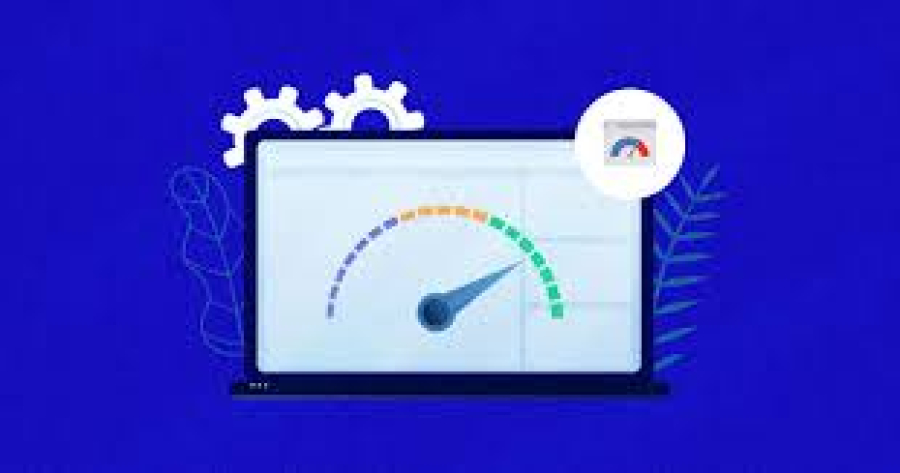How to Improve Website Speed for Better SEO
Website speed is a crucial factor in both user experience and SEO rankings. In today's digital age, a fast-loading website is not just a luxury but a necessity. Slow websites lead to frustrated visitors, increased bounce rates, and ultimately, lower rankings in search engine results. At FreelancerBridge, we recognize that web developers need to understand the connection between website speed and SEO performance to create high-performing websites.
In this article, we will explore the importance of website speed, its direct impact on SEO, and provide actionable strategies to optimize your site for faster performance.
Long Description
How to Improve Website Speed for Better SEO
Website speed refers to the time it takes for your website’s pages to load when a user accesses them. Page speed is a direct ranking factor for search engines like Google, and it can significantly impact user retention and conversion rates. A faster website leads to a better user experience, which not only enhances engagement but also improves your website’s SEO performance. As a web developer or freelancer, understanding the key techniques to optimize your website's speed is essential for staying ahead in search rankings and providing a seamless experience for your users.
Why Website Speed Matters for SEO
User Experience: Google and other search engines prioritize websites that deliver a positive user experience. If your website is slow, visitors are more likely to leave before it finishes loading, which increases your bounce rate and reduces overall engagement. This sends a negative signal to search engines, which can hurt your SEO rankings.
Mobile-First Indexing: With Google’s mobile-first indexing, your website’s mobile speed plays a critical role in its ranking. As mobile web traffic continues to grow, optimizing your website for mobile performance is not just an option but a necessity.
Bounce Rates and Engagement: If your site takes too long to load, users may abandon it before they even get to see your content. A high bounce rate signals to Google that your content may not be valuable, which could lead to lower rankings.
Core Web Vitals: In addition to overall site speed, Google evaluates several user-centric metrics called Core Web Vitals (LCP, FID, CLS), which are all part of the page experience signals. Improving these metrics is essential for optimizing your website for better SEO.
Key Strategies to Improve Website Speed
Here are several strategies that web developers can use to improve website speed and, by extension, boost SEO rankings:
1. Optimize Images
Large, unoptimized images can slow down your website significantly. Use tools like ImageOptim, TinyPNG, or WebP format to compress and optimize your images without losing quality. This will reduce your page load times and improve both user experience and SEO.
2. Enable Caching
Leverage browser caching to store static resources locally on users' devices. When users revisit your website, cached resources (like images, JavaScript, and CSS) will load faster because they don’t need to be downloaded again. This reduces load times and can improve your SEO rankings.
3. Minimize HTTP Requests
Every element on your page (images, scripts, stylesheets) requires an HTTP request. Reducing the number of elements on your pages will result in fewer requests, faster load times, and a smoother browsing experience. You can achieve this by combining CSS and JavaScript files or using inline CSS for small files.
4. Use Content Delivery Networks (CDNs)
A Content Delivery Network (CDN) distributes your website’s content across multiple servers worldwide, ensuring that users load your site from the nearest server. This significantly reduces latency and load times, especially for global users.
5. Optimize CSS and JavaScript
Minifying and combining CSS and JavaScript files can reduce their size and the number of HTTP requests. Tools like UglifyJS for JavaScript and CSSNano for CSS can help you automatically optimize and compress these files.
6. Reduce Server Response Time
Your server's response time (time to first byte) plays a significant role in the speed of your site. To reduce server response time:
Choose a reliable hosting provider.
Optimize your database queries.
Use faster programming languages and technologies that can process requests more efficiently.
7. Use Asynchronous Loading for JavaScript
By default, JavaScript files block the rendering of the page until they are fully loaded. To prevent this, you can load JavaScript files asynchronously using the async or defer attributes in the <script> tag. This allows the browser to continue rendering the page while the scripts load in the background.
8. Implement Lazy Loading for Images and Videos
Lazy loading ensures that images and videos only load when they come into view on the user’s screen. This reduces the initial load time of your website and is particularly beneficial for long-scrolling pages.
9. Reduce Redirects
Redirects add additional HTTP requests and delay page loading. Reducing the number of redirects on your website can improve both user experience and page load speed.
10. Use HTTP/2 or HTTP/3
Upgrade to HTTP/2 or HTTP/3 for faster and more efficient communication between the server and client. These newer protocols allow for multiplexing, which means multiple requests can be processed simultaneously, reducing wait times.
Tools to Measure and Monitor Website Speed
To effectively monitor and measure your website’s speed, use tools like:
Google PageSpeed Insights: Provides detailed recommendations for improving website performance.
GTmetrix: Offers performance scores and suggestions for optimizing speed.
Pingdom: An easy-to-use tool to test the loading time and performance of your website from different locations around the world.
Conclusion
Improving website speed is a vital aspect of SEO that cannot be ignored. By implementing the strategies mentioned above, you can significantly enhance your website's loading time, reduce bounce rates, and improve your rankings on search engines. At FreelancerBridge, we are committed to providing valuable insights to help web developers optimize their websites for better SEO performance.
By making speed a priority, you'll not only provide a better user experience but also create a website that’s more likely to rank higher in search engine results.


 by Emily
by Emily




